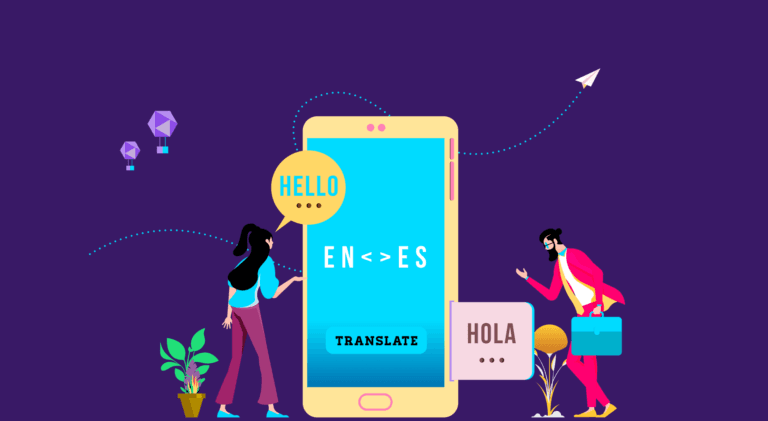Is There A Demand For Regional Indian Language Translators?

Tables have turned. During the imperial era, the Indian multi-linguistic society was handed a common language, English, to abide by. With a huge leap into the era of information, global entities are looking towards India, eager to make their presence felt in terms of Indian regional languages.
The Indian language translation industry is simmering under the effect of global phenomena:
● India’s partnership with foreign industries as a result of the Make In India movement
● India’s highest smartphone penetration in the world
● Rapid digital transformations of businesses post-pandemic
● India emerging as the hub for Global Capability Centers, especially in Tier II and Tier III cities
To tap India’s deeper and denser market segments, you need to offer more than your services. You need to speak their language.
Translators have been doing this for a very long time. However, current times have provided an expansive arena for translators to apply their skills. This comes with a fair share of challenges too. Let’s look at the current high demand in the Language Service Provider (LSP) industry and their challenges.
What Do Indian Language Translators Do?

Translators’ responsibilities go far beyond converting texts, say English, to Hindi, Marathi, Gujarati, or Bengali. You need to carry on the tonality, the essence, the feel of the original text into the translated text. As it is popularly quoted,
“Translation is not a matter of words only: it is a matter of making intelligible a whole culture.” – Anthony Burgess.
Besides speaking both languages fluently, translators are aware of the cultural nuances and dialectical particularities of a language. They are well-read in the formal literature and skillful in the colloquial exchanges.
Indian regional languages translators offer their services in a variety of industries like:
- Corporate
- Marketing and advertising
- Educational
- Scientific
- Entertainment
- Literature
- Financial
- Legal
They must have skills to cater to their specific industry. A scientific or financial translator focuses on accuracy and is educated in that industry. A translator in the marketing industry translates the wordplay in an ad copy for the desired impact on the target audience. Literary translators use their own style to translate not just words but the emotion embedded in the original prose.
The Rising Need for Indian Language Translation
The Indian language translation market
Less than 20% of the Indian population is fluent in English. Close to 50% of the population is fluent and prefers to interact in a language other than Hindi. There are 22 official state languages.
This indicates that a huge chunk of the Indian population uses English and Hindi as a connecting language. But in personal life, e.g., news, social media, novels, and movies, they prefer their native language.
The metropolitan hubs are saturated with offerings. Exponential growth for businesses lies in reaching out to the yet unexplored populace who have digital power in their hands and global aspirations in their minds.
Global players and homegrown startups riding the wave
When Google declares its plans to launch Google Assistant in Indian regional languages, we can deduce the growth opportunities in the regional market.
The government of India is set to invest USD 65 million to make education, especially in science and technology, more inclusive by translating books, courses, exam papers, and degree courses in all the 22 official languages.
The number of startups (20 and counting) that have ventured into the digital localization and translation space clearly indicates how this sector is expected to grow. LSP startups like Reverie, Devnagri, Vernac, and more are receiving funds from venture capitalists.

Challenges for the Indian Language Translation Industry
Despite the promising growth trajectory, there are (good to have) problems. Up until now, translation was not a mainstream occupation. Very few did it as a source of additional income or hobby.
Despite the growth in demand and modern working-model with automated tools to improve productivity, the supply and demand equation does not add up. When the on-demand video streaming channels like Netflix and Amazon Prime gained momentum in India, the spike in demand for translators was not met by quality supply.
Need for organizing and streamlining the translation industry
In the absence of an organized translation industry, the remuneration for translators is demotivating. Inexperienced translators offer their services for a pittance which impacts seasoned translators as well.
Quality and delivery standards
Organizing the language translation sector should be followed by training programs and setting up standards for measuring delivery and quality. This automatically keeps in check the unfair pricing model. With these standards in place, a workforce of highly skilled translators is expected to swell.
Speed vs. authenticity
The businesses that require a high translation volume while maintaining accuracy struggle to appoint enough translators to do the job. There is a lot of buzz around AI-powered Indian language converter software. However, the cost-effectiveness and contextual accuracy of Machine Translation (MT) is yet to be ascertained. Meanwhile, technology can help human translators close the gap between the volume of demand and supply.
To Wrap It Up
Keeping aside demand and challenges for the moment, a career in translation is fulfilling. You can spot demand when you are well-equipped to spot opportunities because ‘being at the right place, at the right time’ is taken care of. Regional Indian language translator services are hot cakes in the present time and for years to come. An organized sector will help translators up-skill themselves, get accustomed to tools that increase productivity and realize the significant role they play in the emerging market.
FAQs
Indian language translation market size is estimated to be close to $500 million – 5% of the global market share, according to Common Sense Advisory.
Language service providers (LSP) are firms that provide regional language translation, subtitling, and transcription services to businesses and agencies to tap a bigger chunk of the multi-linguistic Indian market.
India has the highest internet penetration globally, with approximately 750 million smartphone users across the varied Indian demography. People have easy access to different kinds of content. Statistics show that most prefer to consume content in their native language.
India has 22 official languages. Demand for regional language translation, e.g., Marathi, Tamil, Gujarati, Bengali, Malayalam, and more, is at an all-time high. If you are a tech-savvy translator with a strong academic qualification in at least three languages, you are a sought-after translator.
Latest Blogs
Explore how Google’s 2025 AI search updates triggered ranking chaos. Learn actionable strategies to adapt your SEO for AI Overviews, zero-click searches, and SERP volatility. Stay ahead now.
Learn how to rank on AI search engines like ChatGPT, Perplexity, and Gemini by optimizing your content for authority, structure, and relevance. Stay ahead in AI-driven search with this strategic guide.
Explore the best healthcare SEO services for your medical practice. Improve online visibility and effectively reach more patients in need of your services.
Get your hands on the latest news!
Similar Posts

Translation
5 mins read
All You Need to Know About Language Translation and Terminology Management

Translation
5 mins read
6 Reasons to Translate Content into German

Translation
5 mins read